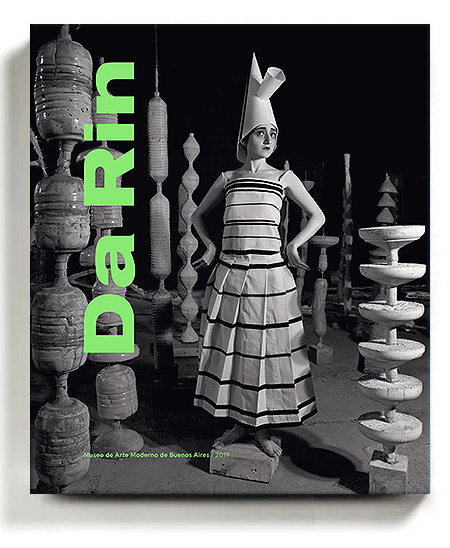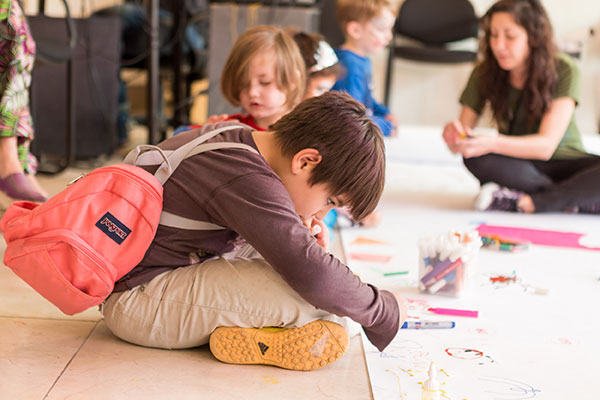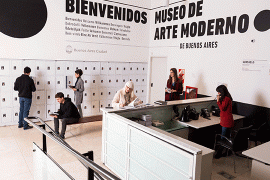2019
Bilingual edition, Spanish/English
Texts: Laura Hakel, Rafael Cippolini, I. Acevedo. Includes an extended
conversation between Da Rin and her teachers, Diana Aisenberg and Guillermo
Kuitca. Graphic interventions made by the artist.
Graphic Design: Eduardo Rey
Translations: Kit Maude
–
336 pages
Format: 28 x 24 cm
ISBN 978-987-1358-62-5
–
This volume spans twenty years in the career of Flavia Da Rin with a careful selection
of her works and a visual journey through the artist’s influences across different projects,
graphically intervened by the artist herself. These reference points are accompanied by
an extended conversation between Da Rin and her teachers, Diana Aisenberg and
Guillermo Kuitca, in which they discuss various aspects of her many aesthetic
transformations. The book also includes a curatorial text by Laura Hakel, an essay
by Rafael Cippolini that tackles the world of meanings contained in Da Rin’s work and
another by I. Acevedo analysing the ways the artist addresses issues like identities,
feminism, autobiography and the political meaning of aesthetic creation.
‘Looking back over her work, Da Rin seems to teleport from one piece to another, like
a reflection that appears in several different places at once. Over the years she has
explored and reconfigured stereotypes of feminine consumption, the tyranny of personality
as merchandise and the highs and lows of the construction of an artistic career. If
avatars or digital skins are contemporary digital mirages onto which we project different
ways of experiencing emotions, relationships and social status, by invoking her own,
the artist has drawn an extensive map of her multiple personalities. Every time she
changes her skin, Flavia Da Rin invents a game where subjectivity is transformed into
an image that embodies desires and fantasies and our potential selves are constantly
being replenished. ’
Laura Hakel
‘It would be very easy to say that all of FDR’s art is a game she plays with herself,
a sumptuous revelry in her own microworlds, an idea that grows more unsettling if one
has read Massimo de Carolis: according to the Italian theoretician, the term ‘microworld’
was adopted by pioneers of research into artificial intelligence who were trying to
resolve “what at the time was described as a frame problem.” A traditional robot,
programmed for industrial use, “can only operate successfully within a specific
microworld” built inside a frame: a rigidly defined logical space. Is it possible to see
FDR’s different series, from the emotional network of the episodes in “El misterio del niño
muerto” [The Mystery of the Dead Boy, 2008-2009] to the elaborate scenes from “Una
fiesta para sacudirse del terror del mundo” [A Party to Drive Terror from the World, 2011]
as anything other than an insistent narrative impulse where every last detail was
conceived within the frame of a software created to manipulate images now placed at the
service of the artist’s microworlds? If all technology is representative of its time, so should
narrative games be defined by their frames. Shifting, crafted imaginative worlds.
Obviously, one can also see the ghost of a tradition, maybe the Flemish schools of the
16th and 17th centuries – an unconscious Bosch or Pieter Brueghel (elder and younger)
in a war of gestures; the spread of scenes into other scenes, the profusion of characters
and strange objects. The visual narrative impulse in all its splendour arriving just before
one of the most incredible generator of stories ever seen: Histoires ou contes du temps
passé (Stories from the Past, 1697) by Charles Perrault. Fairy Tales so contemporary that
they come both before and after our dreams (be they contemporary or otherwise). ’
Rafael Cippolini







